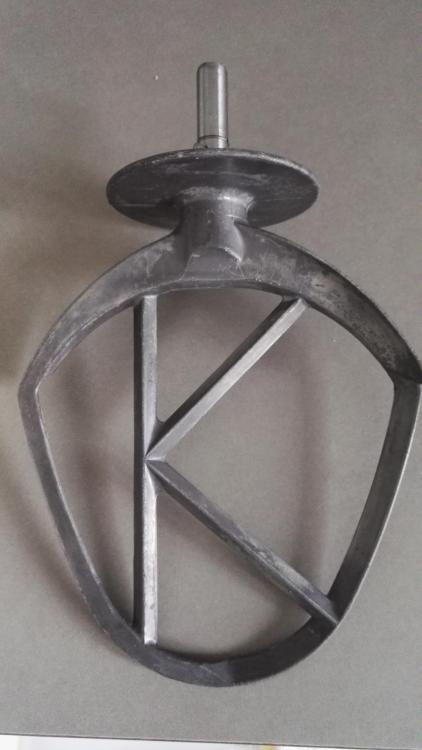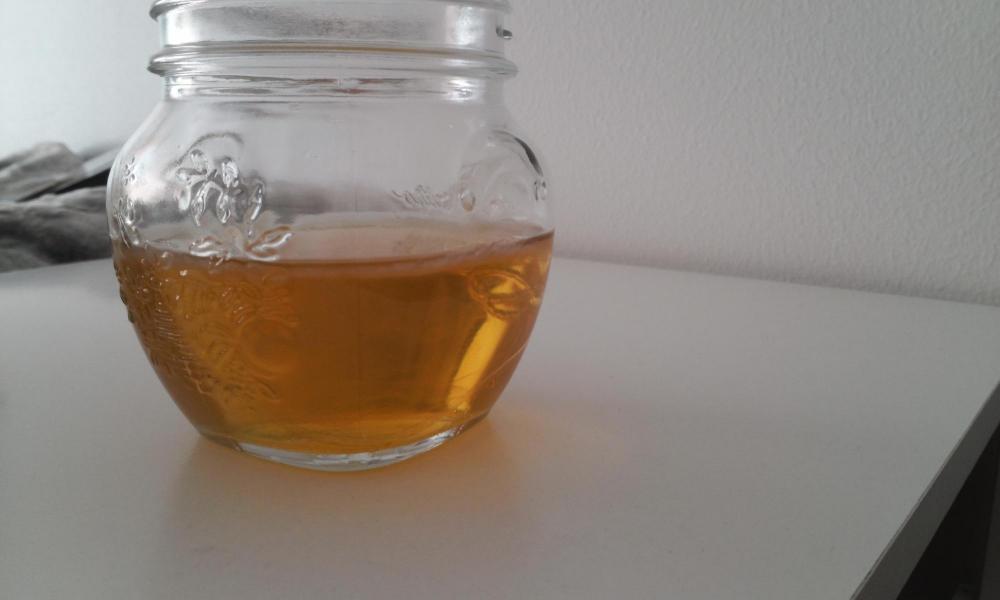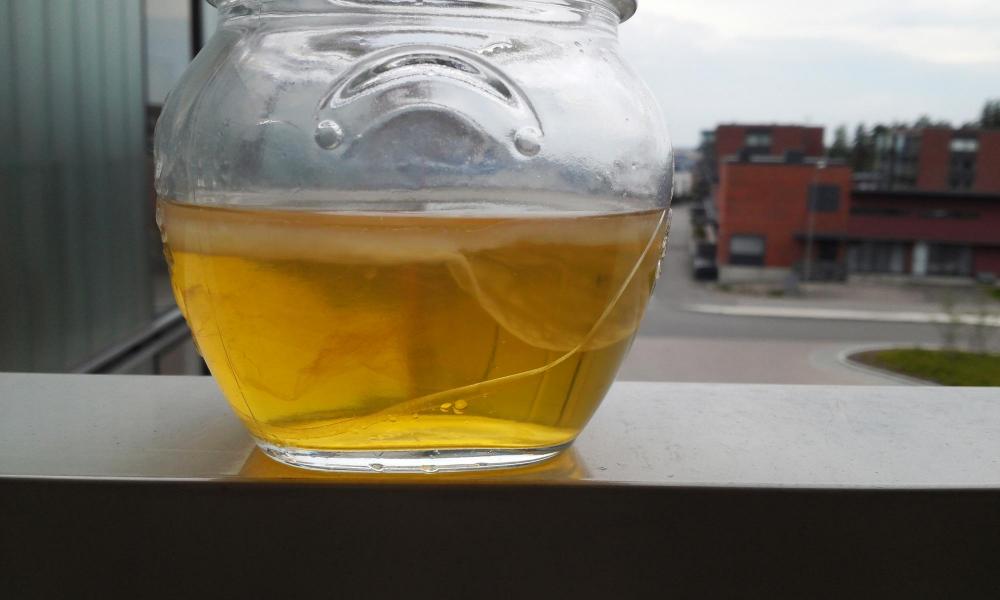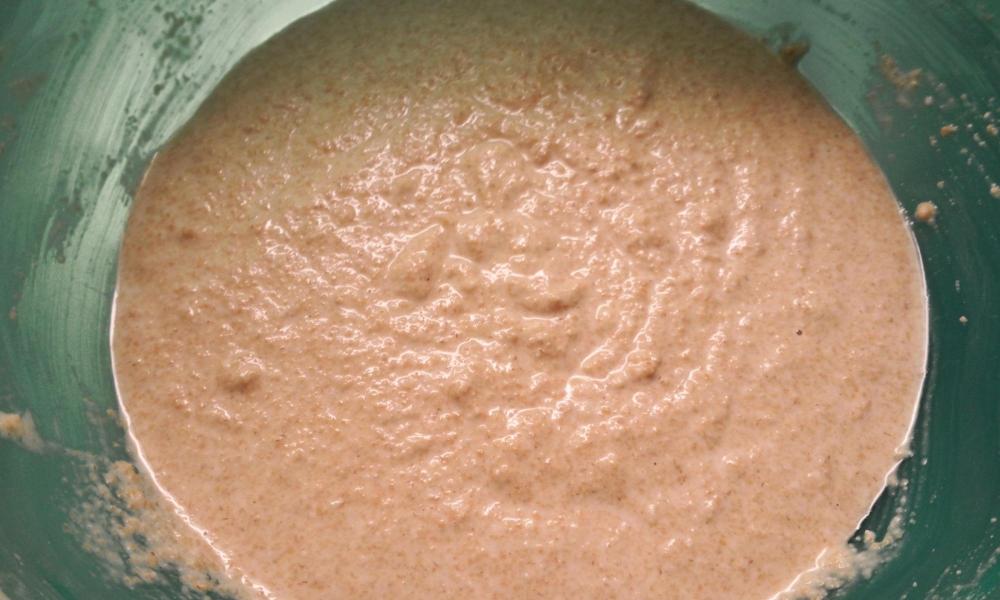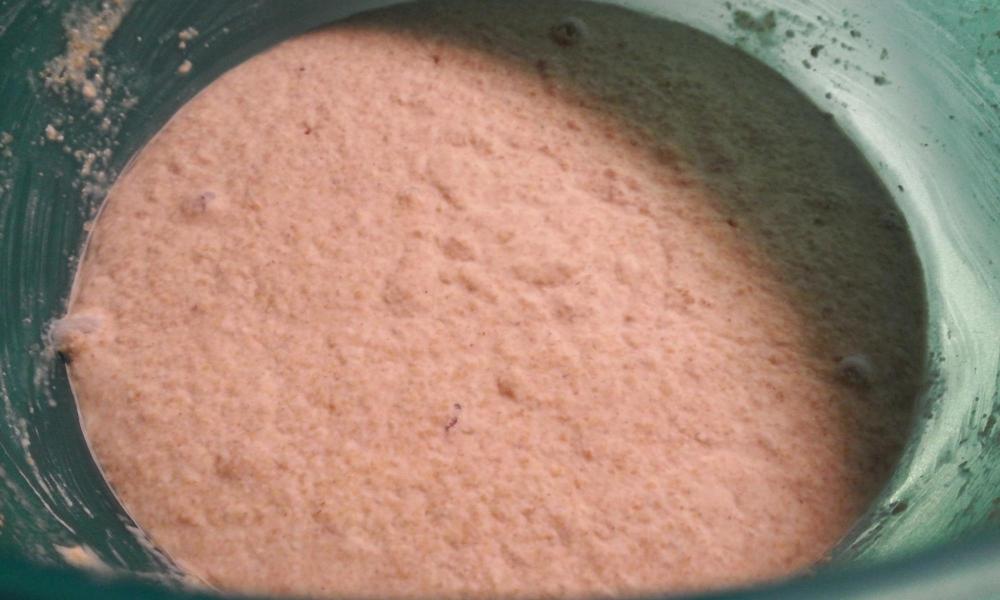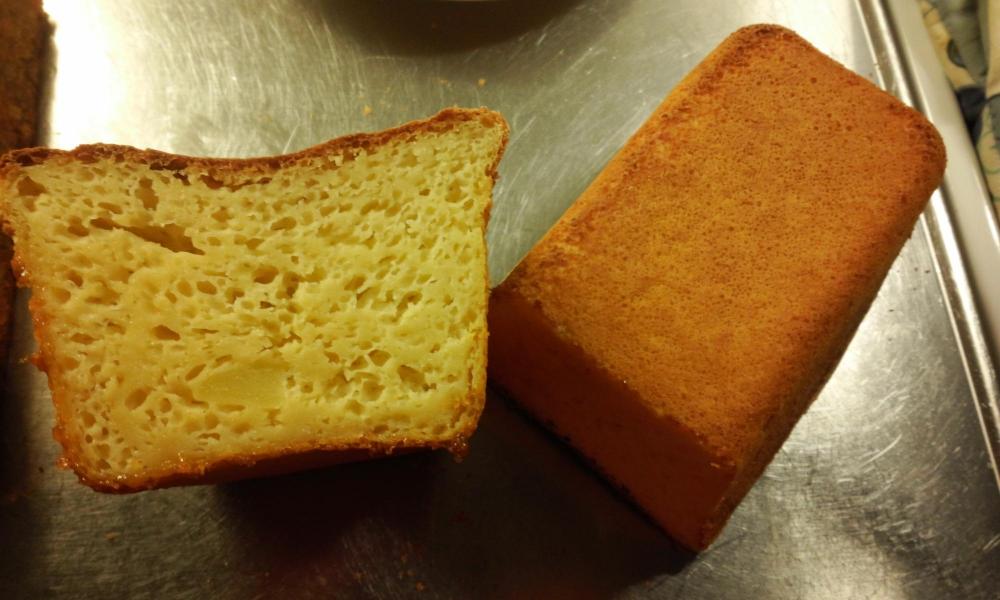-
Posts
116 -
Joined
-
Last visited
Content Type
Profiles
Forums
Store
Help Articles
Everything posted by EsaK
-
After finally getting the MC books and now seeing in Lidl this vacuum sealer, I started wondering what uses does a cheap vacuum sealer have besides extending/improving storage and other very practical matters? I realize it's better for SV than ziplocs etc, but I'm not sure I want a device just for those benefits. I guess I'm more looking at what interesting things you can do with a vacuum sealer that you really can't do without? Vacuum compression of fruits and impregnating flavours into them and stuff like that doesn't really work that well with a basic vacuum sealer, right? What, let's call them culinary applications, are there for basic vacuum sealers? https://www.lidl-service.com/static/114040525/104351_EN_EL.pdf This is the model I was looking at, also curious to hear if someone has it!
-

Your Daily Sweets: What Are You Making and Baking? (2017 – )
EsaK replied to a topic in Pastry & Baking
Thanks so much Patrick for these! I hadn't for some reason ever ran into or thought about the inversion technique here, but it sure makes sense. By the way, do you see any harm in assembling the entremet, storing it in the freezer for a longer time, and then taking it out for glazing when needed? I guess it should be fine with the gelatins and agars etc in the mousse and brulee. And while I'm rolling out the questions.. any tricks on how to get that nice and thick glaze? I recently bought a lot of nuts, including hazelnuts. Almond paste seems like quite a standard product in terms of recipes. But hazelnut praline paste, am I right to assume 100g nuts into caramel from 62g sugar, 17g water roughly does the job, blitzed into a paste (so this doesn't include any chocolate)? -

Your Daily Sweets: What Are You Making and Baking? (2017 – )
EsaK replied to a topic in Pastry & Baking
Looks fantastic to me! If you don't mind a couple questions.. How did you assemble that? Crisp on bottom, mousse over it, almond cake on top with more mousse, freezer, setting creme brulee onto different mold and then adding it, together with last set of mousse? I've done some entremets, and issue with few was that I had small gaps between the layers. Additionally, would you be willing and able to send recipes for the almond cake and mousse you used? Super grateful fan of your work! -
Couldn't find a more recent DIY-vanilla extract topic, sorry if there was one. I put my own vanilla extract going in early May, so it's been going for about two months. I put in 35g of very dry grade B vanilla, and 500g of 80% vodka. Now, I understand that the vanilla is supposed to be 10% of the liquid's weight. I have 500g of 40% vodka in the fridge, and I'm wondering if I should be just adding that to it now or what. Hopefully I'd find more grade B vanilla, but if I do get some for example in 6 months what would be the best way forward? Should I put the 40% vodka in? Should I wait and do nothing? What if I put in the new vodka and fail to find more vanilla, is it going to be intolerably lame? So many questions...
-
Thank you all for the replies! I was hoping there would've been a relavatively simple way (cream of tartar is one of the ingredients that's somehow incredibly hard to find and expensive in this part of the world) to get this safely back to use, but I suppose I'll just go and get a new stainless steel one. It's a shame they cost $50 here, but I just don't want to throw the whole machine away since it seems to work fine..
-
I recently got an old Kenwood mixer, and with it two attachments, the K-beater and the wirewhisk. The whisk seems to be made of stainless steel, so it looks quite alright. But the K-beater is I believe aluminum, and doesn't look too fine. When touched, you get the aluminum in your hands. I googled through but got such a mixed bag of opinions that I decided to ask here. Is that beater beyond redemption, or can it be saved and used safely? And if yes, then how should I go about redeeming it?
-

Your Daily Sweets: What Are You Making and Baking? (2015 – 2016)
EsaK replied to a topic in Pastry & Baking
Is there any possibility to hear about this cheesecake and the recipe for it? It looks so delicious to this fan of cheesecakes... -
I'm trying to find a mixer that could handle doughs etc for the next 10 years. What I've gathered is that Kenwoods seem the most durable option for handling tougher doughs, and KMM710 Major Premier which I view as the cheapest, yet still likely good enough, costs 350 euros. So I thought, if I can get an overall better version for 550 euros then it might not be such a bad idea. No special application really. Would imagine using it for kneading, pastry doughs, and then if it could handle my occassional sous vide needs then that'd be great. I agree that a multitasker is not generally what I want. Still, if someone has experience or knowledge of the cooking chef models, especially the KM070, I'm all ears.
-
I'm considering buying the Kenwood Cooking Chef as I could get it used for 550 euros ($600). Since I don't yet have a sous vide setup (nor a stand mixer, but a very good food processor) I'd be interested in hearing if CC works as an OK replacement or is the temperature range/stirring thing disabling that? (I'm not expecting it to be precise to 0.1°C, 1-2°C would be fine for me). Also, any other pointers are warmly welcomed. EDIT: Just to be clear, it's the KM070 version. Reading quite a lot of reviews of people getting in some issues with it is quite troubling.
-
Somewhere in the earlier pages it was asked how could a vinegar mother be "stored", and I didn't see any thoughts on it. F.e. I have wine or fruit juices very rarely under normal circumstances, but I would hate to give up my vinegar mother. So if I want to avoid having it sit in some, say apple cider vinegar, for too long (to not make it turn watery), and avoid killing the mother, is there any way to store it? I can dry a sourdough starter and then get back to it later, but how could I store a vinegar mother to preserve it? First thought that came to mind was covering it with 10% white vinegar, don't know if that's a good or bad idea. Please help
-
My apple cider has been in its jar for about a month now, and some days ago I purchased apple vinegar from the store (not organic, didn't think it had a mother of any kind really). The cider hadn't really changed much as far as I could see, so I decided to put some of the apple vinegar in with it. Well, didn't take long until something happened. Now I'm very unsure if what I have is good or bad. Hopefully the thing can be seen from the pictures. It's a white/opaque "disk" that floats on top. Is that what I want to see, or is it some sort of bad mold?
-
And how would you recommend trying if I may ask? Put the cider in a glass jar (for a week, two weeks?) with a cheesecloth on top, in 27-30°C room temp (it's very hot in our apartment during summer) and wait? Something I'm missing, something to notice? Many thanks for your responses!
-
So you wouldn't use even the first one that according to the ingredient list contains just sulphites (which I think are preservatives in there)? The cider's have 4.7% alcohol in them so I guess that's covered. And quite a bit of suagar in there as well.
-
Bumping up an old thread. I just got a bunch of apple and pear ciders that I don't think I will drink. I started thinking that I'd like to try and make vinegar out of some cans. I read a bunch of things and feel puzzled. Ideas In Food's Aki & Alex are saying (http://blog.ideasinfood.com/ideas_in_food/2013/01/cider-vinegar.html) that just leaving the cider exposed to air would produce apple cider vinegar (I have no idea if their cider is similar enough to what I have). The ciders (Finnish) I have contain a) apple wine, apple juice concentrate, carbon dioxide, apple flavourants (and sulphite), b) apple wine juice, apple juice concentrate, carbon dioxide, acidity regulator, flavours, preservatives (potassium sorbate, sodium disulphite), sweeteners, colours. Could someone be so kind and give some instructions as to how I could try turn these into vinegars?
-
Big fan of cheesecakes here too. Someone mentioned freezing them, and I was wondering if there was some knowledge I'm lacking on that front. I've tried freezing them several times but seem to always end up with soggyness after de-frosted. Hate to have a great cheesecake frozen and then swimming in liquid when I take it out and want to eat it. What kind of cheesecakes have you managed to freeze without the liquid seeping out (egg-based or something else, some binder added?), and how have you actually done it (de-frosted in fridge, room-temp etc)? Thanks for all the help!
-
Thanks for the thoughts cakewalk! The few breads I've made with it were okay, not superbly open textures. Taste was quite nicely sour I think. I took it as a good indicator when I made the crackers with only the discarded starter and they tasted almost like ones from the store (which are delicious, mine were less great). The openness/rising I would imagine is due to many factors other than the starter. If they should be rising close to like with yeast though, then there's probably something wrong. And as you mention, the top really doesn't look bubbly at all. I've stored the discarded parts in a plastic jug in the fridge where you can see that even in the fridge it develops quite a bit of bubbles. Same thing in the roomtemp, the bubbles are under the surface mostly. Now I'm thinking I should start a new one with AP flour (or rye, that's what they used to use) and see if the starter rises and how it smells/tastes..
-
Need help with my starter... I've had it going for like 3 weeks or so now, feeding it each day. So, roomtemp is around 20-21°C, I began the starter with equal grams water and AP. After a few days, I started feeding whole wheat flour. Each night, I took out 100g and put in 50g (the last week I changed flour to 60g) flour and 50g water and stirred. It has smelled yeasty, soapy, alcoholy or something like that everyday. I've made all kinds of things with it and there certainly is a sourdough flavor to it. Made some "crackers" with only the discarded starter, and they tasted very much like the sourdough crackers we have here. The issue I have is that I'm really not sure if something's wrong with my starter or is it as it should be? I can't notice any rising within an hour, two hours or the next day after I've fed it. And sometime before I began using 60g/50g flour/water to feed it, it took on a dry looking surface. Below are two pictures, roughly 1hr after feeding (it looked exactly the same right after feeding, 1hr, 2hrs later) and the next morning (which is what it looks like the whole day, kinda dried on the surface). Any thoughts and help would be greatly appreciated!
-
Any chance you might lay out the steps you took to get this result, and the ratios you used?
-
I should've taken a picture of it but it certainly looked like mold. Couple of little white moldy dots with some darker stuff in the middle. I didn't really take a look at them before the 4th day so I don't know if it was first "scum" and then developed into mold? No clue really.
-
Anyone kind enough to help me with this safety question in anyway? Should these be okay, or was there something fundamentally wrong with my ingredients/pickling process?
-
Many thanks keychris! I messed up the ratios at first when it said somewhere that you could use f.e. cup flour, cup water. Changed it to be equal flour and water in grams, looks nice. Another question that came to mind was whether there was any real meaning behind the "discard half, add original amount of flour and water"? Say, I start with 100g flour + 100g water. Discard 100g of starter, then I should add 100g flour and 100g water again, making my starter 50% bigger. Am I missing/compromising on something if I don't want to make my starter any bigger? Intuitively I'd say it shouldn't matter, but then again I don't really know. Thanks!
-
I attempted pickling with the basic, cucumber. Now I'm wondering if I can eat them, or should it be discarded. I had roughly 100g whey, 150g water, 12.5g salt in the liquid. Added cleaned cucumbers, was in 19-20°C cupboard for 4 days with a piece of plastic wrap to keep cucumbers submerged and a cloth on top. Today, 4th day, when I looked at them, the plastic wrap had mold on it and the liquid on the bottom is rather cloudy. I don't find an off-smell, haven't tasted them. Somewhere I read that mold on top may not be such a bad thing with these, but I'm very hesitant to eat them without knowing more. Anyone know what's going on, what I might have done wrong?
-
The last bread I made was from Gluten-Free Flour Power, a gluten-free potato bread. Tasted and was all-in-all quite decent I thought. Now, I hope this is an appropriate place to ask these beginner's questions. I decided to start building a sourdough starter, 100g AP flour + 185g water. 1) when discarding half of it every day, can I theoretically just use it in any baking recipe (to replace 50g flour and 92.5g water, or how does one scale it)? 2) If I want to incorporate for example rye, whole wheat into the starter, should I simply use that flour instead of AP when adding the fresh flour to the starter? 3) I read that if you refridgerate the starter, you should take it into room temp 24hrs before using it. Is there a reason why I couldn't put it in the fridge and then add it, say, to a no-knead dough raised in fridge? Many thanks for the help!
-
From what I've read, kropsu is specifically from Pohjanmaa/Ostrobothnia. Biggest difference to pannukakku is supposed to be that kropsu is thinner and somewhat crispy on top, whereas pannukakku is more "custardy" / thicker and not crispy. Joululimppu is great. Put some cured salmon on top of that and you're good to go. And for karjalanpiirakka's flavor, the pie itself I guess isn't super tasty. In my opinion, what makes it tasty is when you put some egg butter on top and eat it warmed. Still, it's a very humble pie if you look at the ingredients and I wouldn't call it a flavor bomb or anything. Probably the same thing could be said of most other Finnish dishes that come from the earlier times when ingredients were scarce.
-
Now that I thought about it, a video will show the actual method much better than I could ever describe in words. The below clip seemed to show the technique of assembling that's said to be "the right one". Make them as thin as possible (with the help of pasta machine if you wish!), slather a tablespoon of porridge on it, and then go do the finger work (the lady seems to have done those a few times before, judging from the speed at which she goes). Bake in as high temperature as you got, brush with melted butter and rest under a cloth to soften. And, in my opinion, eat with a mix of hard boiled eggs and butter, aka egg butter (munavoi)! Also, don't put the dough into fridge as it'll harden, so use plenty of flour to avoid sticking. And the dough could be made even with 10 rye to 3 wheat, or something like 3 rye to 2-3 wheat. I imagine the more rye you put in there, the closer you get to what it originally was. Happy to help if I can!



